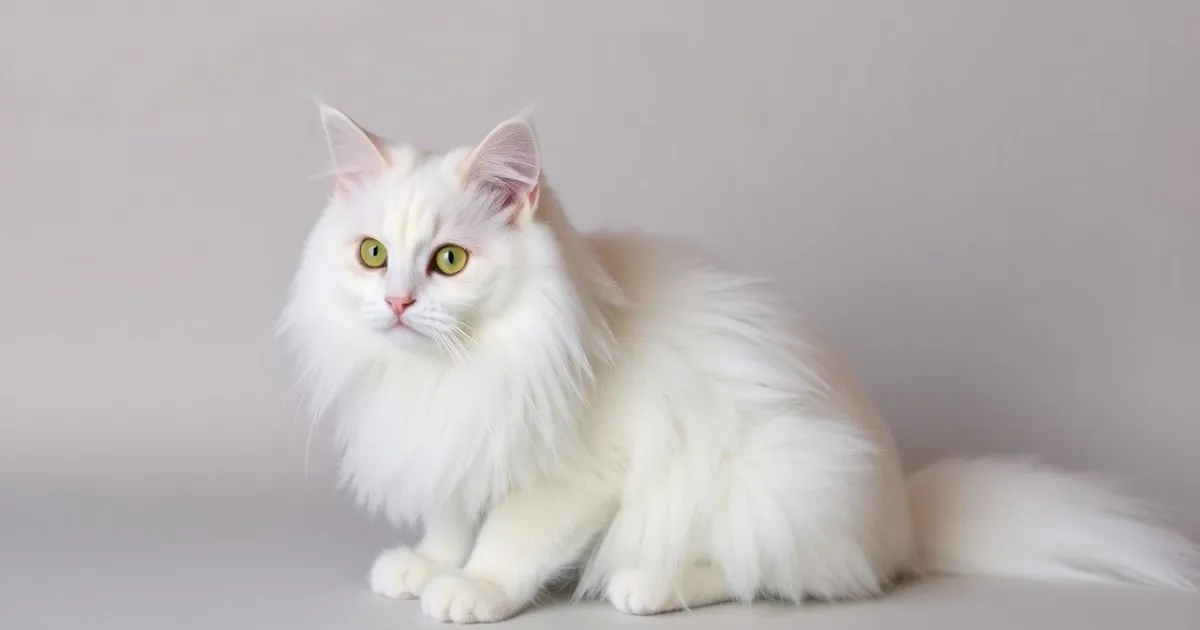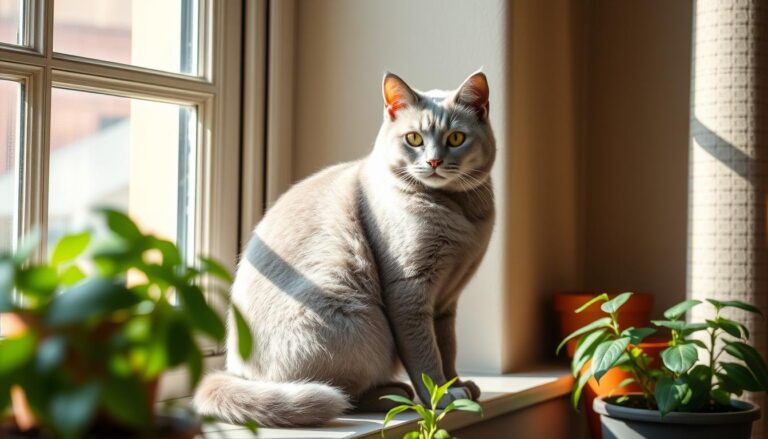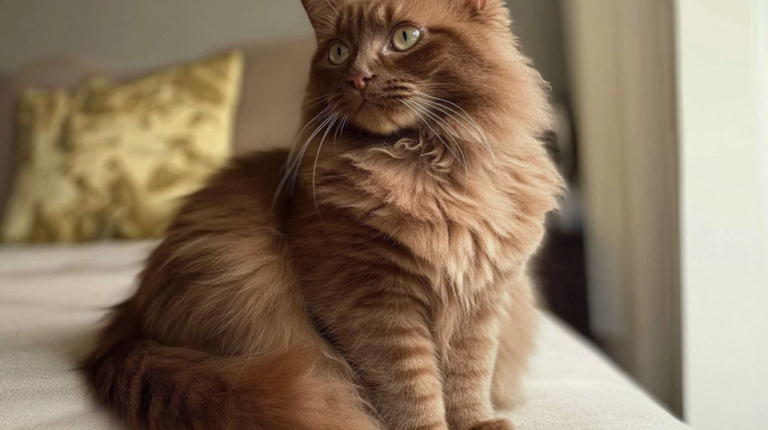Meet the Turkish Angora: A Cat Breed Loved by Royalty
Imagine a cat with the grace of royalty, a playful heart, and a coat as silky as snow. The Turkish Angora is a rare breed with a long history. It brings beauty, charm, and poise to any home.
Ever wondered about having a captivating and intelligent feline? The Turkish Angora might be your perfect match.
This guide will introduce you to the Turkish Angora breed. By the end, you’ll see why they’re loved worldwide and cherished as pets.
| Attribute | Details |
|---|---|
| Official Name | Turkish Angora Cat |
| Common Name | Turkish Angora |
| Pet Height | 9-11 inches |
| Pet Weight | 5-10 pounds |
| Lifespan | 12-18 years |
| Smartness Level | High |
| Engagement in Play | High |
| Human-Friendly | Very Friendly |
| Animal-Friendly | Friendly |
| Favorite Food | Fish, Chicken, Wet Food |
Table of Contents
The Story Behind the Turkish Angora
A Glimpse into Their Ancient Beginnings
The Turkish Angora comes from the Ankara region of Turkey, known as Angora historically. They are one of the oldest cat breeds, roaming Turkey’s hills for centuries. Their resilience and adaptability won locals’ hearts, who valued their beauty and grace.
A Favorite Among Royalty
These cats caught the eye of European and Asian royals. They were given as gifts, showing wealth and status. Turkish Angoras even lived in the Ottoman Empire’s palaces, charming sultans with their looks and smarts.

Turkish Angora’s Unique Physical Characteristics
A Striking Appearance
The Turkish Angora has a slender, athletic build and elegant stance. Their long legs and sleek shape make them look sophisticated. Their almond-shaped eyes, in blue, green, amber, or odd colors, are truly captivating.
Their Iconic Coat
The Turkish Angora’s coat is soft and silky. It’s different from many long-haired breeds because it doesn’t mat easily. This makes grooming simple. The coat also shimmers in the light, adding to its beauty.
| Feature | Description |
|---|---|
| Body Shape | Slender, long, and fine-boned |
| Eye Shape | Almond-shaped, expressive |
| Eye Colors | Blue, green, amber, odd-colored |
| Coat Type | Silky, single-layered |
| Common Coat Colors | White, black, blue, cream, and more |
Personality Traits and Temperament of Turkish Angoras
Affectionate and Social
Turkish Angoras are friendly and love to be around people. They follow you everywhere and love to be close. They develop close relationships with their humans.
Intelligent and Playful
These cats are smart and curious. They love to explore and play. They can even learn tricks and fetch like dogs.

Grooming and Maintenance Needs of Turkish Angoras
Low-Maintenance Coat
Thanks to their coat, grooming is easy. A weekly brush keeps their fur looking great. Their coat doesn’t tangle, making grooming simple.
Tips for Keeping Them Well-Groomed
- Brush Weekly: Use a soft-bristled brush to remove any loose hairs and maintain their coat’s shine.
- Check Their Ears and Teeth: Regular ear and dental care are essential to prevent issues.
- Trim Their Nails: This can help prevent any accidental scratches, as Turkish Angoras can be quite active.
| Grooming Task | Frequency |
|---|---|
| Brushing | Once a week |
| Ear Cleaning | Every two weeks |
| Dental Care | Weekly |
| Nail Trimming | Every 2-3 weeks |
Ideal Living Environment for Turkish Angoras
Turkish Angoras fit well in many homes, big or small. They need places to play and think. Cat trees, toys, and windows can keep them happy.
Cat-Proofing Your Home
These cats are curious and agile. Ensure your living space is safe for cats. Secure breakable items and give them places to explore.
Health and Common Health Issues in Turkish Angoras
A Generally Robust Breed
Turkish Angoras are usually healthy. But, like all purebreds, they can face some health issues.
Common Health Concerns
- Deafness: White-coated Turkish Angoras with blue eyes are more prone to congenital deafness.
- Hypertrophic Cardiomyopathy (HCM): A condition affecting the heart, seen occasionally in this breed.
| Health Condition | Symptoms | Treatment |
|---|---|---|
| Deafness | Lack of response to sounds | Veterinary assessment |
| Hypertrophic Cardiomyopathy | Labored breathing, lethargy | Medication, regular vet check-ups |
Nutrition Requirements for Turkish Angoras

A well-balanced diet is key for Turkish Angoras. They need a high-protein diet to keep their energy up. This is due to their playful nature.
Tips for Choosing Their Diet
- High-Quality Protein: Choose cat foods with lots of meat for muscle health.
- Balanced Nutrition: Mix wet and dry food for better hydration and dental health.
- Portion Control: Turkish Angoras eat a lot, so watch their portions to avoid obesity.
Training and Socialization Tips for Turkish Angoras
Easily Trained and Social
Turkish Angoras are smart and easy to train. They love to play and learn tricks. Early socialization helps them feel confident around others.
Using Positive Reinforcement
Training them with treats or affection works well. Their curiosity makes them eager to learn, especially if it’s fun.
Turkish Angoras and Children
Turkish Angoras are gentle and patient, making them great with kids. They enjoy playing together but teach children how to handle them gently.
Are Turkish Angoras Good with Other Pets?
Turkish Angoras usually get along with other pets, like cats and dogs. Introduce them slowly and watch them together. They like their space, so they need time alone too.
Turkish Angora Colors and Coat Patterns
Turkish Angoras come in many colors and patterns. White is the most traditional, but they also have black, blue, red, and cream. Each one is unique.
| Color | Description |
|---|---|
| White | Most traditional color |
| Black | Sleek and striking |
| Blue | Soft, silvery hue |
| Red | Warm, coppery tones |
Purchasing or Adopting a Turkish Angora
Choosing Between Breeders and Adoption Centers
When getting a Turkish Angora, you can pick from breeders or adoption centers. Breeders offer health guarantees and proper care. Adoption centers have cats in need of homes..
Turkish Angora’s Influence on Pop Culture and Art
Turkish Angoras have made their mark in art and culture. They appear in Turkish folklore and in films, books, and art. Their beauty and grace inspire many.
Fun Facts About Turkish Angoras
- Known as “national treasures” in Turkey.
- Famous for their social and “chatty” personalities.
- Fascinated by water, unlike most cats.
- Often have a musical, soft purr that adds to their charm.
Comparing the Turkish Angora with Similar Breeds
Let’s see how the Turkish Angora compares with other long-haired breeds:
| Feature | Turkish Angora | Persian | Maine Coon | Siberian |
|---|---|---|---|---|
| Coat Length | Medium | Long | Long | Medium-long |
| Personality | Playful, social | Calm, affectionate | Friendly, playful | Adventurous |
| Grooming Needs | Low | High | Moderate | Moderate |
| Common Health Issues | Heart issues | Respiratory issues | Hip dysplasia | Allergies |
Frequently Asked Questions (FAQ) About Turkish Angoras
Q: Are Turkish Angoras hypoallergenic?
A: No, they are not hypoallergenic, though they shed less than some breeds.
Q: How long do Turkish Angoras live?
A: They live 12-18 years with proper care.
Q: What is the personality of a Turkish Angora?
A: They are affectionate, social, and very intelligent. They bond strongly with their families.
Conclusion: Is the Turkish Angora Right for You?
The Turkish Angora is more than a pet; it’s a loving companion. They have a rich history, a playful nature, and are very intelligent. They make great pets for both new and experienced owners. Ready to add one of these majestic cats to your family? They bring joy, loyalty, and beauty into your life.







